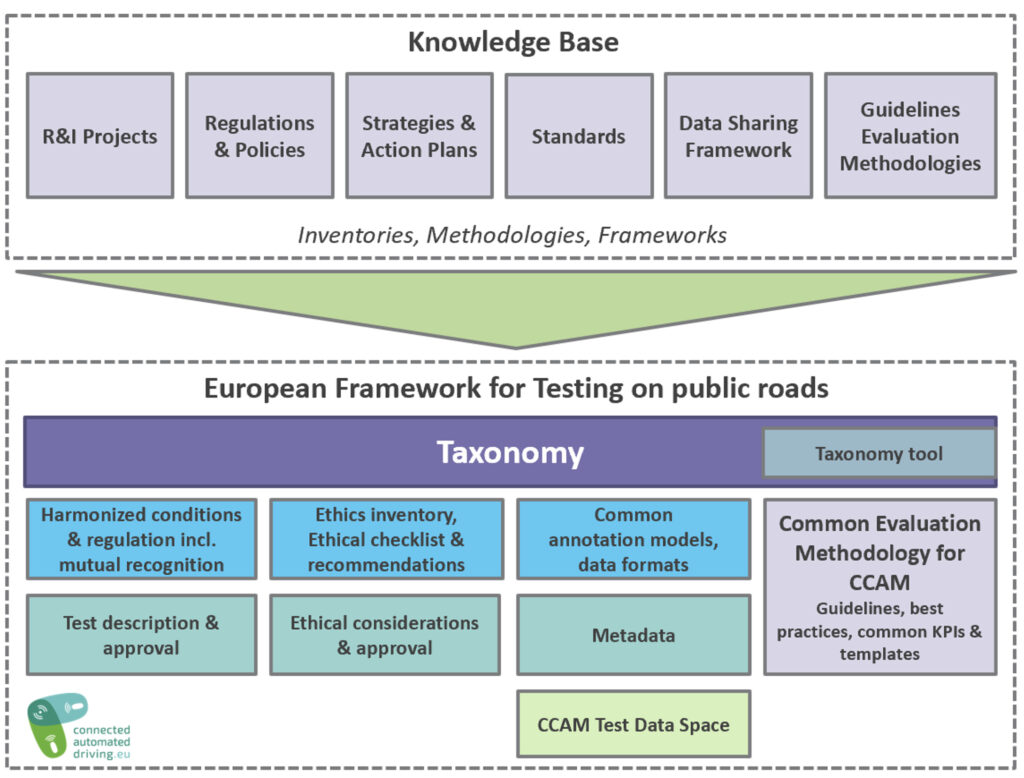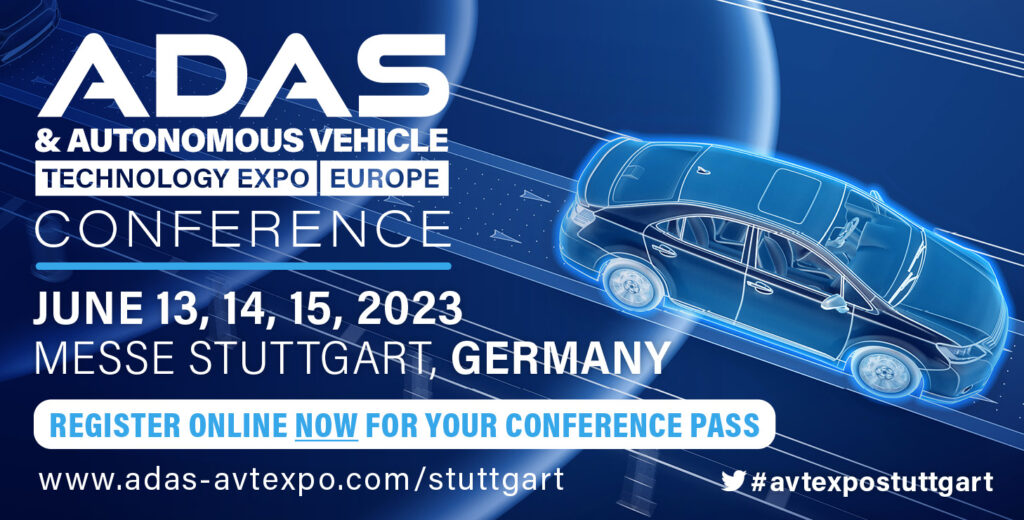 In search of greater clarification around current procedures and the overall regulatory landscape surrounding the testing of connected and autonomous vehicles on public roads, ADAS & Autonomous Vehicle International recently caught up with Dr Stephane Dreher, senior manager Innovation & Deployment CCAM and Blockchain at ERTICO – ITS Europe, ahead of his conference presentation at this June’s ADAS & Autonomous Vehicle Technology Expo, in Stuttgart, Germany.
In search of greater clarification around current procedures and the overall regulatory landscape surrounding the testing of connected and autonomous vehicles on public roads, ADAS & Autonomous Vehicle International recently caught up with Dr Stephane Dreher, senior manager Innovation & Deployment CCAM and Blockchain at ERTICO – ITS Europe, ahead of his conference presentation at this June’s ADAS & Autonomous Vehicle Technology Expo, in Stuttgart, Germany.
Dr Dreher is currently coordinating the EC-funded FAME project aimed at supporting the alignment of CCAM research and innovation (R&I) and testing in Europe and contributing to the Trilateral EU-US-Japan ART cooperation. He is a member of the Executive Group of the CCAM Partnership under Horizon Europe, leading the coordination cluster. Previously, he was a transportation data and statistics expert with the United Nations Development Program in Riyadh, Saudi Arabia; and before that, he worked at Here in charge of EU government programs. At this year’s conference in Stuttgart, he will discuss the landscape and harmonization needs of EU cooperative, connected and automated mobility (CCAM) research and innovation and testing.
Describe your presentation?
The presentation will provide an overview and analysis of R&I and testing activities in Europe and its member states and introduce first findings toward the development of a European framework for testing on public roads regarding testing regulations and harmonization needs. Building on the previous EU-funded Coordination and Support Actions ARCADE and CARTRE, the FAME project develops and maintains tools supporting the coordination and alignment of R&I and testing in Europe. It capitalizes on shared knowledge to improve, across the CCAM stakeholder community, the cooperation, consensus building and data sharing needed for the organization and evaluation of demonstration in EU. The European framework developed by the FAME project includes three main components that are aimed at facilitating the organization, set up and evaluation of testing and large scale demonstration of CCAM services and enabling their complementarity: a Common Evaluation Methodology (CEM), a Test Data Space (TDS) and a legal and ethical framework.
How close are we to a meaningful, effective European framework for testing automated driving functionality on public roads?
The work in FAME builds on the outcome and recommendations of the CCAM Platform expert group set up by the European Commission between 2019 and 2021 as well as on best practices from tried and tested methodologies like FESTA[1] and from projects L3Pilot[2], SAM[3] and Hi-Drive[4]. The FESTA methodology was developed in 2008 in the EU project FESTA to support Field Operational Tests (FOT) of advanced driver-assistance and vehicle ICT systems. It has since received many updates. The complexity of CCAM systems, which comprise various functions, requires a new approach and more agile and flexible evaluation processes.
CCAM systems are often still prototypes under development and for practical and legal reasons can generally not be tested with FOTs as they require safety drivers or can only be operated in limited areas. The CEM should cover many different impact areas with different requirements and be applicable by projects with different resources. The CEM development started in July 2022 and involves a team from 10 organizations across nine European countries. It will be developed in several iterations over the three-year duration of the FAME project.
Other challenges for large scale demonstrations and testing in Europe include the lack of harmonized testing regulations and procedures among different member states, hampering especially cross-border testing initiatives, as well as insufficient sharing and re-use of test data between projects. The EU-wide Knowledge-Base[5] set up by ARCADE contains a Data Sharing Framework with hands-on recommendations and an overview of regulations and policies in Europe. Next steps in FAME include the development of recommendations for harmonized conditions and processes for CCAM systems tests on public roads and in particular of criteria for mutual recognition of procedures to facilitate future cross-border testing. A Test Data Space will enable trusted data sharing between different types of stakeholders within the CCAM community.

What were the main lessons learned from ARCADE and CARTRE?
A key task in the EU-funded Support Actions CARTRE and ARCADE, coordinated by ERTICO has been the progressive set up of the wide stakeholder network necessary to gather information about R&I and testing activities across Europe and to build consensus on R&I priorities and harmonized methodologies. While the involvement of EU-funded project representatives is quite straightforward, as the projects are monitored by the European Commission, identifying national, regional or local R&I and testing initiatives and reaching out to the associated contact persons has been challenging. The close cooperation with the CCAM Platform in the frame of ARCADE has been fundamental to gather information about initiatives in member states. As a consequence, today more than 50% of the about 350 projects listed in the Knowledge Base are from member states. In FAME, we have thus been collaborating from the start with the CCAM Partnership Member States Representatives Group (SRG). With the support of this group, we are currently gathering the requirements for testing activities (incl. small-scale pilots, large-scale demonstration sites, living labs) in all member states. This will form a basis to investigate the different approaches, commonalities and peculiarities across countries.
Another challenge has been the lack of common vocabulary and definition of CCAM principles, terminology and concepts which prevents a consistent classification of projects and limits the comparability of results. One of the first tasks in FAME is the definition of a taxonomy and the development of a taxonomy tool to enable a uniform interpretation and use of basic CEM/CCAM principles, terminology and concepts.
Isn’t simulation now so sophisticated that testing on public roads is no longer necessary?
We have addressed this question recently in a R&I projects and stakeholder consultation workshop which FAME organized in Brussels in early May aimed, among other topics, at identifying the needs for future large scale demonstrations to support the update of the Strategic Research and Innovation Agenda (SRIA) of the CCAM Partnership. We discussed there the fact that scaling of tests and demonstrations is costly with the increasing number of vehicles and the necessity to update and map the infrastructure. Simulation is thus an essential tool for scaling and estimating the impacts in different scenarios involving larger penetration rates than would be possible in the real world. Different traffic scenarios could also be systematically simulated to learn how the traffic situation affects the impacts. Real-world testing is however needed in particular to evaluate social impacts like acceptance from users and citizens, interaction with other road users or handling of unexpected situations that might impact overall traffic or safety. Also, without calibration with the real-world tests, the simulations can represent driving and traffic behaviour which can be far from realistic. The prototype vehicle behavior is not replicated one-to-one in simulations but there is a need to understand in which ways the prototype behaves differently from the market product. The CEM will consider simulations. For indirect impacts, the approach will include an overview of modeling concepts.
What is the key message you want to convey in Stuttgart – and who would you like to meet?
Engaging with stakeholders from the complete value chain of CCAM is at the heart of the activities in FAME. It is essential to co-create with the community the harmonized framework we need for future testing of CCAM on public roads. Meeting with product suppliers, technology developers involved in testing and European, national or local research project representatives and policy makers at the show in Stuttgart will provide a great opportunity to communicate about the framework development, gather feedback, share best practices and discuss challenges and future needs for testing and evaluation.
For example, as regards the CEM, input from other projects will be sought regarding the role of different evaluation approaches in the assessment. After completion of the first version of CEM, it will need to be validated and piloted in actual projects that need to prepare for an evaluation or impact assessment. This will be done with selected European and national projects by allowing them to use draft versions of the methodology and collect feedback for its elements.
We would be interested in getting in touch with projects that could be fit for testing the CEM, or willing to share data through the Test Data Space or simply take part in the future workshops and conferences FAME is organizing (e.g. EUCAD 2023 and 2025) to support stakeholder alignment and the development of European R&I roadmaps and agendas.
Dr Dreher will present at the three-day ADAS & Autonomous Vehicle Expo Europe conference in Stuttgart alongside 120 other speakers across three full days and three full streams, covering the most pertinent issues in ADAS and autonomous driving development today. To view the program or book a pass, please visit the conference website.
REFERENCES:
[1] https://www.connectedautomateddriving.eu/methodology/festa/
[3] https://www.vedecom.fr/sam-project-security-acceptability-for-automated-driving/?lang=en



